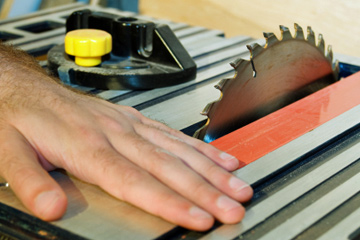 According to one estimate, over 400,000 people go to the emergency room annually as a result of injuries caused by workshop equipment and power tools. Approximately 70 percent of the people who wind up in the emergency room as a result of injuries caused by power tools are amateur craftsmen.
According to one estimate, over 400,000 people go to the emergency room annually as a result of injuries caused by workshop equipment and power tools. Approximately 70 percent of the people who wind up in the emergency room as a result of injuries caused by power tools are amateur craftsmen.
There are several common power tool-related injuries to be aware of, including saw amputations, lacerations, eye injuries, and puncture wounds. While there are many different ways to get injured while using power tools, there are a number of safety tips you can incorporate into your work no matter what tools you’re using.
- Be familiar with how your tool operates before you start using it. If you’re a beginner, take the time to read the owner’s manual or speak to knowledgeable experts. Only use power tools for the specific functions they were designed for.
- Thoroughly inspect your power tool to ensure that it’s in working order. Don’t forget to look over any safety equipment that comes with your power tools.
- Before actually commencing work is to take a minute to make sure that you’re physically able to undertake a task that involves using power tools. If you’ve been drinking, or if you’re rushed or fatigued, put off working with power tools until you’ve had time to recharge your batteries.
As far as precautions to take while you work, you should always wear standard safety equipment, such as a face shield, gloves and goggles. If you’re using a power tool that runs on gasoline, there are some extra safety precautions that you should incorporate into your work, including working only in well-ventilated areas and filling up the gas tank only after the power tool’s engine has cooled.
